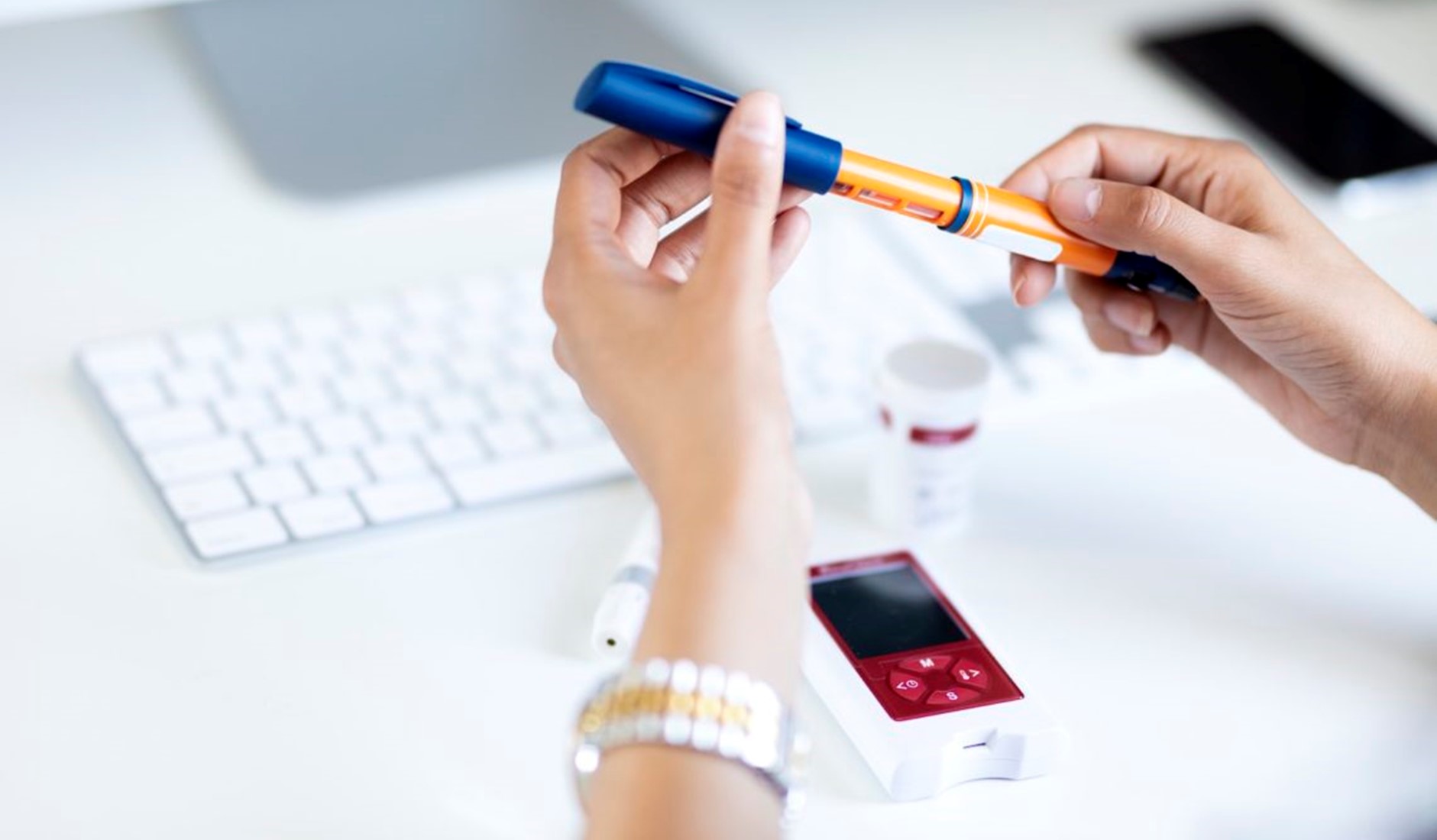| Product name | Per Pill | Savings | Per Pack | Order |
|---|---|---|---|---|
| 14 pills | $3.34 | $46.82 | ADD TO CART | |
| 28 pills | $3.03 | $8.74 | $93.63 $84.89 | ADD TO CART |
| 42 pills | $2.93 | $17.48 | $140.45 $122.97 | ADD TO CART |
| 56 pills | $2.88 | $26.22 | $187.27 $161.05 | ADD TO CART |
| 70 pills | $2.84 | $34.96 | $234.08 $199.12 | ADD TO CART |
| 84 pills | $2.82 | $43.69 | $280.89 $237.20 | ADD TO CART |
| 98 pills | $2.81 | $52.43 | $327.71 $275.28 | ADD TO CART |
| Product name | Per Pill | Savings | Per Pack | Order |
|---|---|---|---|---|
| 14 pills | $3.18 | $44.58 | ADD TO CART | |
| 28 pills | $2.89 | $8.32 | $89.15 $80.83 | ADD TO CART |
| 42 pills | $2.79 | $16.64 | $133.73 $117.09 | ADD TO CART |
| 56 pills | $2.74 | $24.96 | $178.30 $153.34 | ADD TO CART |
| 70 pills | $2.71 | $33.28 | $222.88 $189.60 | ADD TO CART |
| 84 pills | $2.69 | $41.60 | $267.45 $225.85 | ADD TO CART |
| 98 pills | $2.67 | $49.93 | $312.04 $262.11 | ADD TO CART |
Type 2 diabetes is a chronic condition that affects millions of people worldwide. It is characterized by high blood sugar levels, which can lead to serious health complications if left untreated. One of the most effective ways to manage type 2 diabetes is through medication, and Forxiga is a popular choice among healthcare professionals. In this article, we will delve into the world of Forxiga, exploring its benefits, uses, and how to order Forxiga or buy Forxiga online.
What is Forxiga?
Forxiga, also known as dapagliflozin, is a sodium-glucose cotransporter 2 (SGLT2) inhibitor. It works by preventing the kidneys from reabsorbing glucose back into the bloodstream, thereby increasing glucose excretion in the urine. This mechanism of action helps to lower blood sugar levels, reducing the risk of complications associated with type 2 diabetes.
Benefits of Forxiga
Forxiga has several benefits that make it an attractive treatment option for people with type 2 diabetes. Some of the key advantages include:
- Improved glycemic control: Forxiga has been shown to significantly reduce HbA1c levels, a measure of average blood glucose control over time.
- Weight loss: Forxiga can help with weight loss, which is a common comorbidity associated with type 2 diabetes.
- Blood pressure reduction: Forxiga has been shown to lower blood pressure, which can help reduce the risk of cardiovascular disease.
- Reduced risk of cardiovascular events: Forxiga has been shown to reduce the risk of major adverse cardiovascular events, such as heart attacks, strokes, and deaths from cardiovascular disease.
Uses of Forxiga
Forxiga is primarily used to treat type 2 diabetes, but it can also be used to treat other conditions, such as:
- Type 1 diabetes: Forxiga can be used in combination with insulin to improve glycemic control in people with type 1 diabetes.
- Heart failure: Forxiga has been shown to reduce the risk of worsening heart failure and cardiovascular death in people with heart failure.
How to Take Forxiga
Forxiga is available in two strengths: 5 mg and 10 mg. The recommended dose is 10 mg once daily, but some people may start with a lower dose of 5 mg once daily. It is essential to take Forxiga as directed by your healthcare provider and to purchase Forxiga 10 mg or buy Forxiga 5 mg from a trusted online pharmacy.
Table: Forxiga Dosage and Administration
| Strength | Dosage | Administration |
|---|---|---|
| 5 mg | 5 mg once daily | Oral |
| 10 mg | 10 mg once daily | Oral |
Where to Buy Forxiga
Forxiga is available at most pharmacies, both online and offline. However, it is essential to order Forxiga from a trusted online pharmacy to ensure that you receive a genuine product. Some popular online pharmacies that sell Forxiga include:
- Online pharmacies: You can buy Forxiga 10 mg or purchase Forxiga 5 mg from online pharmacies that offer a wide range of medications at discounted prices.
- Pharmacy chains: You can also buy Forxiga from pharmacy chains that have an online presence.
Tips for Buying Forxiga Online
When buying Forxiga online, it is essential to keep the following tips in mind:
- Check the authenticity: Make sure that the online pharmacy is authentic and sells genuine products.
- Read reviews: Read reviews from other customers to ensure that the online pharmacy is reliable.
- Check the price: Compare prices from different online pharmacies to ensure that you get the best deal.
- Look for discounts: Look for discounts or promotions that can help you save money.
Lists of Forxiga Products
Here are some lists of Forxiga products that are available online:
- Forxiga 10 mg:
- Order Forxiga 10 mg with Amex
- Purchase Forxiga 10 mg with Visa
- Buy Forxiga 10 mg with Mastercard
- Forxiga 5 mg:
- Order Forxiga 5 mg with Amex
- Purchase Forxiga 5 mg with Visa
- Buy Forxiga 5 mg with Mastercard
Conclusion
Forxiga is a highly effective medication for managing type 2 diabetes. Its benefits, uses, and availability make it an attractive treatment option for people with type 2 diabetes. When buying Forxiga online, it is essential to keep in mind the tips mentioned above to ensure that you receive a genuine product. Remember to order Forxiga from a trusted online pharmacy and to purchase Forxiga 10 mg or buy Forxiga 5 mg at a discounted price.
References
- Forxiga official website: www.forxiga.com
- National Institute of Diabetes and Digestive and Kidney Diseases: www.niddk.nih.gov
- American Diabetes Association: www.diabetes.org
Note: This article is for informational purposes only and is not intended to be a substitute for professional medical advice. Always consult with a healthcare provider before starting any new medication, including Forxiga.
Type 2 diabetes is a chronic condition that affects millions of people worldwide. It is characterized by high blood sugar levels, which can lead to a range of serious health complications if left unmanaged. One of the most critical aspects of managing type 2 diabetes is controlling blood glucose levels. In this article, we will explore the importance of blood glucose control, the factors that affect it, and the strategies that can be used to achieve optimal glucose levels.
Why is Blood Glucose Control Important?
Controlling blood glucose levels is essential for people with type 2 diabetes because it helps to prevent the development of complications associated with the condition. Some of the potential complications of uncontrolled blood glucose levels include:
- Cardiovascular disease: High blood glucose levels can damage the blood vessels and nerves, increasing the risk of heart disease, stroke, and peripheral artery disease.
- Kidney disease: Diabetes is the leading cause of kidney failure, and high blood glucose levels can damage the kidneys over time.
- Nerve damage: High blood glucose levels can damage the nerves, leading to numbness, tingling, and pain in the hands and feet.
- Blindness: Diabetes is a leading cause of blindness, and high blood glucose levels can damage the blood vessels in the eyes.
- Amputations: High blood glucose levels can lead to poor wound healing, increasing the risk of amputations.
Factors that Affect Blood Glucose Control
Several factors can affect blood glucose control in people with type 2 diabetes. Some of the most significant factors include:
- Diet: The type and amount of food consumed can significantly impact blood glucose levels. Foods that are high in sugar, salt, and unhealthy fats can cause blood glucose levels to rise.
- Physical activity: Regular physical activity can help to lower blood glucose levels and improve insulin sensitivity.
- Medications: Certain medications, such as metformin and sulfonylureas, can help to lower blood glucose levels.
- Stress: Stress can cause blood glucose levels to rise, and chronic stress can lead to poor glucose control.
- Sleep: Poor sleep quality and duration can disrupt blood glucose control and increase the risk of complications.
Strategies for Achieving Optimal Blood Glucose Control
Achieving optimal blood glucose control requires a comprehensive approach that includes lifestyle modifications, medication, and regular monitoring. Some of the strategies that can be used to achieve optimal glucose control include:
- Eating a healthy diet: Focus on consuming whole, unprocessed foods such as vegetables, fruits, whole grains, lean proteins, and healthy fats.
- Engaging in regular physical activity: Aim for at least 150 minutes of moderate-intensity aerobic exercise, or 75 minutes of vigorous-intensity aerobic exercise, or a combination of both, per week.
- Taking medications as prescribed: Work with your healthcare provider to develop a medication plan that is tailored to your needs.
- Monitoring blood glucose levels regularly: Use a glucose meter to track your blood glucose levels and adjust your treatment plan accordingly.
- Getting enough sleep: Aim for 7-8 hours of sleep per night to help regulate blood glucose levels.
- Managing stress: Engage in stress-reducing activities such as yoga, meditation, or deep breathing exercises.
Table 1: Blood Glucose Targets for People with Type 2 Diabetes
| Time of Day | Blood Glucose Target |
|---|---|
| Fasting | < 130 mg/dL |
| Before meals | < 140 mg/dL |
| After meals | < 180 mg/dL |
| Bedtime | < 140 mg/dL |
Benefits of Achieving Optimal Blood Glucose Control
Achieving optimal blood glucose control can have numerous benefits for people with type 2 diabetes. Some of the benefits include:
- Reduced risk of complications: Controlling blood glucose levels can help to prevent the development of complications associated with diabetes.
- Improved quality of life: Achieving optimal glucose control can improve overall health and well-being, reducing the risk of fatigue, pain, and other symptoms associated with diabetes.
- Increased life expectancy: Controlling blood glucose levels can help to increase life expectancy and reduce the risk of premature death.
- Reduced healthcare costs: Achieving optimal glucose control can reduce the need for medical interventions and hospitalizations, resulting in cost savings.
Common Barriers to Achieving Optimal Blood Glucose Control
Despite the importance of blood glucose control, many people with type 2 diabetes face barriers to achieving optimal glucose levels. Some of the common barriers include:
- Lack of access to healthcare: Limited access to healthcare services and medications can make it difficult to achieve optimal glucose control.
- Limited health literacy: Limited understanding of diabetes management and blood glucose control can make it challenging to achieve optimal glucose levels.
- Socioeconomic factors: Poverty, lack of education, and limited access to healthy food and physical activity opportunities can make it difficult to achieve optimal glucose control.
- Mental health issues: Depression, anxiety, and other mental health issues can make it challenging to manage diabetes and achieve optimal glucose control.
Overcoming Barriers to Achieving Optimal Blood Glucose Control
Overcoming barriers to achieving optimal blood glucose control requires a comprehensive approach that addresses the physical, emotional, and social factors that affect glucose control. Some of the strategies that can be used to overcome barriers include:
- Working with a healthcare team: Collaborate with a healthcare team to develop a personalized treatment plan that addresses your unique needs and challenges.
- Seeking support from family and friends: Build a support network of family and friends who can provide emotional support and encouragement.
- Joining a diabetes support group: Connect with others who are living with diabetes to share experiences, advice, and support.
- Accessing community resources: Take advantage of community resources such as diabetes education programs, fitness classes, and healthy food initiatives.
Conclusion
Controlling blood glucose levels is essential for people with type 2 diabetes. Achieving optimal glucose control requires a comprehensive approach that includes lifestyle modifications, medication, and regular monitoring. By understanding the factors that affect blood glucose control and using strategies to overcome barriers, people with type 2 diabetes can achieve optimal glucose levels and reduce the risk of complications. Remember, controlling blood glucose levels is a journey, and it's essential to be patient, persistent, and supportive throughout the process.
List of Resources
For more information on blood glucose control and type 2 diabetes, please consult the following resources:
- American Diabetes Association: www.diabetes.org
- Centers for Disease Control and Prevention: www.cdc.gov/diabetes
- National Institute of Diabetes and Digestive and Kidney Diseases: www.niddk.nih.gov/health-information/diabetes
- Diabetes Support Groups: www.diabetessupportgroups.net
Table 2: Medications for Type 2 Diabetes
| Medication | Mechanism of Action | Common Side Effects |
|---|---|---|
| Metformin | Decreases glucose production in the liver | Nausea, diarrhea, abdominal pain |
| Sulfonylureas | Stimulates insulin release from the pancreas | Hypoglycemia, weight gain, skin rash |
| Pioglitazone | Increases insulin sensitivity | Edema, weight gain, increased risk of heart failure |
| DPP-4 inhibitors | Increases insulin release and decreases glucose production | Nasal congestion, sore throat, increased risk of pancreatitis |
Note: This article is for informational purposes only and is not intended to provide medical advice. If you have type 2 diabetes, please consult with your healthcare provider to develop a personalized treatment plan.
























